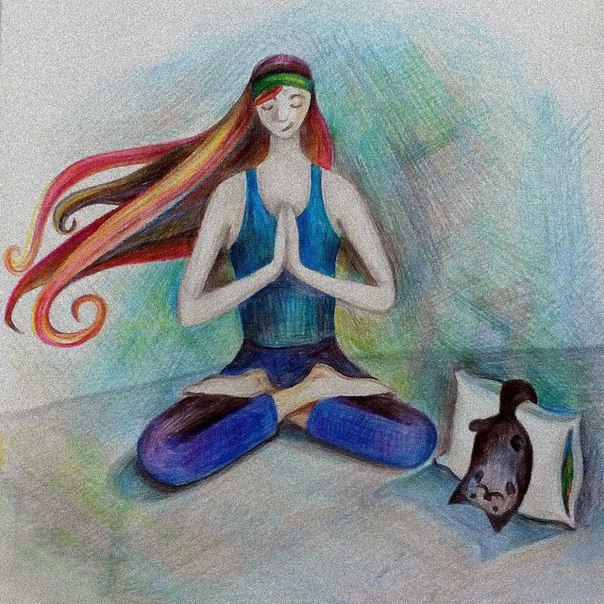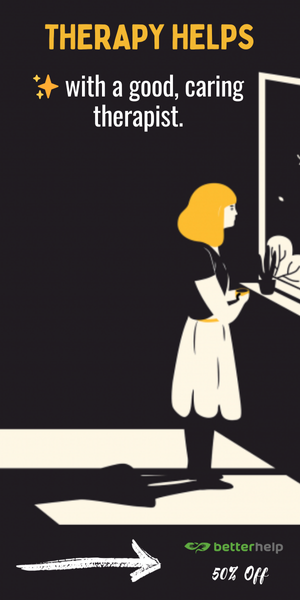
Editor’s Note: No website is designed to, and can not be construed to, provide actual medical advice, professional diagnosis or treatment to you or anyone. Elephant is not intended as a substitute for medical or professional advice, care or treatment.
~
When I walk into the studio I teach at on Wednesdays, the studio is hectic.
Two incredibly popular classes are letting out, and one class full of students in attendance is starting up. My yin and restorative students are trying to grab bolsters from the hallway and make their way through the sea of other yoga students. It is organized chaos.
Usually there is a buzzing feeling that the teachers and the studio staff can pick up on. Our studio is smack in the middle of Boston, and students are usually rushing in after battling crowded subway cars. They are coming straight from work or from other obligations (more on the over-scheduled east coasters in future posts.)
They are also coming in glued to their smart phones, ingesting all of the external noise that those tiny devices deliver at the swipe of a finger. Even if their intention is to scan through some Instagram posts of their friend’s puppy, they become inundated with political messages on social media. They bounce back and forth between screens, completely overwhelming their brains and systems with information, opinions, and unfolding news stories.
In the past few weeks, it has been impossible for me to read through the news without feeling like the whole world is upending. The vitriol spewed by our elected (and trying to be elected) officials, the women and men who are losing their lives due to gun violence, the deep racism that has been given a public platform, cultural unrest, and a pervasive sense of fear and potential violence—it is everywhere.
We don’t know where to turn our aggression or our sense of wanting to help. Major tragedies are coming back to back, and we haven’t had time to mourn or process before a new news alert pops up on our phone and we are quickly distracted again.
What I hear from friends and colleagues is they have an inability to process it all. This inability leads to either staying glued to news sources to try to make sense of it all, or a complete avoidance of the news. Some are even saying that they fear that they have become numb. They no longer flinch when they hear that there has been another mass shooting. They are not shocked when a peaceful protest ends in a riot.
My students in recent weeks have been telling me about headaches, jaw pain, neck and shoulder tension, stomach aches, and general fatigue. I can see it in their faces and on their bodies. All a reaction to our current state of affairs. There is a general sense of being worn out, while at the same time having restless energy. We talk to each other about general self-care. However, the real self- care is admitting what we really need is to step away from the noise and to slow down.
A trauma-informed restorative setting is just that. It helps us step away from the chaos and slow down. Restorative yoga is a practice that helps to move our physical and emotional systems out of fight or flight (our sympathetic nervous system), into rest and digest (our parasympathetic nervous system).
When practicing restoratives, we create a passive and subtle opening across the body by using props like bolsters, blankets, blocks, and straps. Instead of relying on muscular strength and effort to open the body, restorative yoga poses are structured to allow the body to surrender into the support of the props, releasing any need for any energetic effort.
These poses are typically held for five minutes or more so that the person practicing the pose can really get a chance to settle and calm their nervous system. Restorative yoga can help students regulate issues like insomnia, chronic pain, depression, anxiety, adrenal fatigue, and so much more.
Some examples of restorative poses that are go-to poses that can be practiced on a daily basis are:
1.Supported child’s pose : Take a bolster and lay it so that the short end lines up with the short end of your mat. Take a wide knee child’s pose, and bring the short edge of the bolster about one inch away from the inner thigh. As you fold forward into child’s pose, drape the torso over the bolster and turn your head in the direction that feels most comfortable.
2.Legs up the wall : Lay down on the ground close to where the wall and floor meet. Curl up into the fetal position on your side and do so in a way where your sit bones and the soles of your feet are pressed against the wall. Roll on to your back and lengthen the backs of the legs up the wall.
By allowing for time to turn the external volume down, and the internal volume up, we re-establish a sense of safety within our own physical bodies and reaffirm our deep commitment to nourishing ourselves. We move together to find rhythm and community, yet allow for personal choice at every turn so that students can honor their own needs and their internal wisdom first. Trauma-informed restorative classes provide time to just be—no demands from the external world. No straining of the heart and mind to make sense of a chaotic emotional landscape. No straining of the eyes, not to mention the neck and shoulders, to ingest the latest and most detailed news story.
The classes allow for personal space, so that students can revel in their own energy. The students discharge the energy that they no longer want to carry in order to make space for health, healing, and internal compassion. As a teacher I try to stay as quiet as possible. I know that this may be the only hour and 15 minutes that these students will get of quiet time in a place of safe and secure surrender.
Restorative yoga can be incredibly transformative for the physical body. Students report being able to find space and release in their abdomen which can have a positive impact on the gastrointestinal system as well as breath by allowing the diaphragm to move more freely. Students report finding physical opening across the chest and pectoral muscles, counter balancing the rounded upper back that we are developing after long days at the computer. Students report reduced headaches, chronic pain, and improved sleep. Nervous systems settle so students can make better decisions about their health and well-being. They feel empowered and embodied.
How do we, as an elephant journal community, help students find their way to restorative practices?
If you are a student who already has a restorative practice, stick with it. Maybe challenge yourself to practice one restorative pose a day. You could try a 10 minute supported savasana as long as your phone and gadgets are in another room.
If you are a studio that offers a restorative class, try giving it a little extra publicity by reminding students that restorative practices can be deeply nourishing to the nervous system. These classes are not just a one-off that needs to be practiced on occasion, but a whole practice unto themselves.
If you are a studio that does not offer a restorative class then consider brining in a local teacher who specializes in this style. Even a one-off class can be incredibly supportive to a student who is in need.
If you are a teacher who teaches styles other than restoratives then yes! Rock on! Thank you for doing what you do. Remind your devoted students to check out other classes to compliment and balance their practice.
Nourishing our own well-being supports our work in nourishing our friends, families, and communities. Nourishing our communities is a deeply transformative act and a powerful tool for healing, something we could all use a little bit of right now.
Relephant Links:
Restorative Yoga Literally Saved My Ass (& the Rest of Me, Too).
~
Author: Alexis Marbach
Image: meredyn/Deviantart
Apprentice Editor: Deb Jarrett Editor: Travis May


 Share on bsky
Share on bsky




Read 13 comments and reply